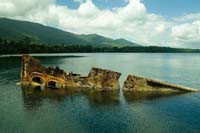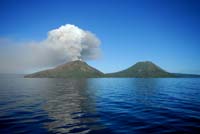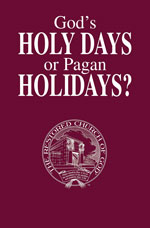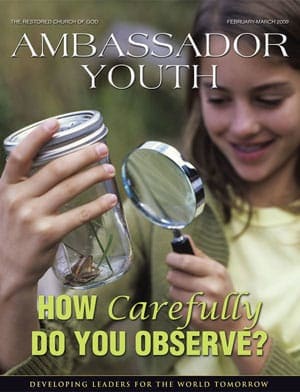The home of cars fueled by coconut oil, the archipelago nation of Papua New Guinea lies just 160 kilometers south of Australia, where it has remained largely untouched by modern civilization. It has been only during the last century that the country, once described as one of the last wildlife frontiers, began to transform itself into what it is today.
Papua New Guinea consists of more than 150 islands, in four regions broken into 19 different provinces. Also called the Independent State of Papua New Guinea, the nationâs capital is in Port Moresby. Most Papua New Guineans prefer to live in the highlands and mountainous regions in small tribal villages.
The island boasts a population of 5.5 million inhabitants, all of whom speak more than 800 local dialects. Its native people are a mixture of various ethnic groups, including the Melanesians, Papuans, Negritos, Micronesians and Polynesians. Most of the populace speaks at least three languages, but the unifying language is Pidgin English, which derives from Tokin Pidgin. Other dialects include Mubami, Dawawa and Zimakani, among others.
The main island of Papua New Guinea was first discovered by Portuguese navigator, Don Jorge de Meneses in the 1500s. Historians claim that Mr. Meneses called it âPapua,â which in the Malay dialect signifies the frizzy appearance of the nativesâ hair. Later another Spanish explorer, Ynigo Ortis de Retez, added the words âNew Guineaâ because he believed that the inhabitants of Papua resembled those living on the African Guinea coast.
Before Europeans ever set foot on the island, the area was occupied by the Motu and Koitabu people, who built sailboats, which they sailed on the Gulf of Papua. Despite the islandâs unusable soil and low rainfall, early Papua New Guinean natives were able to barter pottery for flour to sustain themselves.
Although its currency is now called PNG Kina, seashells hedged in gold were once used to buy and sell things. This practice was outlawed in 1933, and credit cards are now accepted in most large stores and hotels.
Since the islandâs discovery, Papua New Guinea has been owned by various countries, including both Germany and the United Kingdom in 1885, and Australia in 1902. But it was not until 1975 that the country officially gained its independence.
Because of the rich cultural heritage of the island and colonial influences, Papua New Guinea is well-known for its arts and crafts. Visitors to the island can buy products ranging from bilums, string bags made of natural fiber to garamuts, drums made from hollow tree trunks, to storyboards, reliefs of village scenes carved into wood.
More than 700 species of birds populate the island, including 38 species of the striking Bird of Paradise, which performs a ritualistic dance to attract a mate. This also includes many colorful varieties of butterflies, including the worldâs largest butterfly, the Queen Alexandraâs Birdwing. In addition, the country houses the second largest rainforest and some of the worldâs most beautiful coral reefs, which have been said to contain five times the amount of aquatic life as the Caribbean Sea.

Source: Taro Taylor

Source: Billy Crosse

Source: Taro Taylor
During the past 60 years, the island has made significant progress with industrialization and innovation. China recently began developing a $1.4 billion nickel and cobalt mine, in return for building infrastructure to help modernize the country.
The island of Bougainville is an example of progress made within the nation. Due to the high price of importing fuel, natives developed a method of using its staple, coconut oil, to power its generators and vehicles, in addition to using it for other purposes, such as cooking oil or soap. In this way, the island has been ahead of its time in eliminating its fossil fuel dependency.
To learn more about this unusual country, visit Papua New Guineaâs tourism site on the Internet.



















